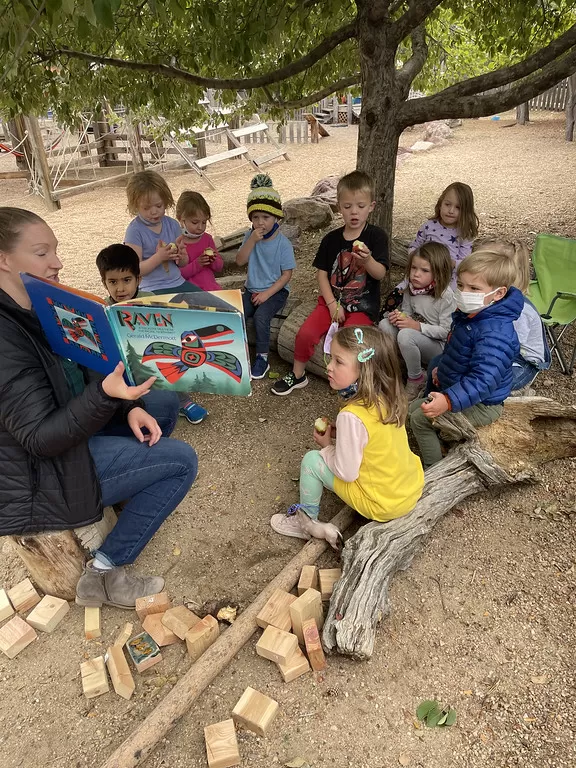Global competence means understanding about the world and approaches to living in it that enable learners to meaningfully engage with the world around them.
As any parent can attest, to some degree our children come into this world as who they are – hints of disposition and temperament reveal themselves early in life. From there, family, discovery, peers, and the world around them interact with each child to shape their beliefs, interests, self-concept, and their journey. Learning does not happen in a vacuum, but rather it happens in the context of relationships – with ourselves and also with others. As part of our accreditation self-study process, we have been reflecting on ways that we intentionally create relationships that foster learning. It has also prompted us to articulate WHAT is it we are inviting students to learn? WHY is that important? and HOW do we focus on those areas without jeopardizing space for the spontaneous ways that learning happens.
We’ve taken the first stab at capturing the WHAT in this working draft of a curriculum framework:
Documenting the WHAT led us to see more clearly also WHY we do some of what we do. It also led us to an “aha!” moment, realizing that some important parts of WHY and WHAT we do aren’t things we had been talking about as much – the idea of “Global Competence” came out of this realization. Global competence is quite simply the understanding of who we are in the context of the world around us. Pat Baker, our co-founder, would say “it is important that children learn at least as much about themselves as they do about academics each year.” I couldn’t agree more. I would add to this by offering that exposure to a richly diverse community helps us learn more about ourselves. I’m excited to be investigating what “Global Competence” is and discovering all the ways that it shows up in our school community. I look forward to continuing this conversation with our broader community.
In the meantime, here are some ways that our students and faculty are investigating their world and some of the many diverse and divergent perspectives and experiences this month.
-
Preschool is planning cooking projects for Indigenous People’s Day. They will also be sharing some stories and hand games that Anna is hoping to pick up at this Boulder celebration of Indigenous Peoples Day. There is also lots of music and storytelling to celebrate Hispanic Heritage Month.
-
In our Elementary program, students are also using the current Hispanic Heritage Month and upcoming Indigenous Peoples day as opportunities to explore:
-
Kindergarten students made paletas during Cooking Club yesterday after reading a book about this treat, and they will make tortillas next week.
-
Beth will be offering a glimpse into Día de Los Muertos as an option for 4th/5th Grade electives. Students will be cooking food associated with the tradition tamales and hot chocolate, doing crafts- papel picado, paper flowers, paper mache, putting together an ofrenda-altar, and going on a field trip to the Longmont Museum for their Day of the Dead exhibit.
-
In Spanish Fiorella is doing a land acknowledgment with the 3rd and 4th graders for Indigenous Peoples’ Day and a salsa or cumbia class for Hispanic Heritage month (she’s still deciding between Celia Cruz or Selena!)
- In 3rd and 4th Grade Literacy, students started reading picture books by Latinx authors/illustrators as well as talking about the Pura Belpre prize (and Pura Belpre, the prize’s namesake). They’ll read books by Native creators the week of Oct 11, as well as offer chapter books in the class library for students to read independently for both of these designations.
- In Crystal’s music classes, students are learning about different styles of Latin American music – salsa, cumbia, bachata, rumba, merengue, etc. They are listening to music, identifying the instruments used, composers of Hispanic heritage, and learning songs in Spanish; as well as exploring and playing the drums associated with these styles of music. Crystal shares “it’s the source of the thunderous sounds coming from my classroom. Apologies if it’s too loud!”
-




